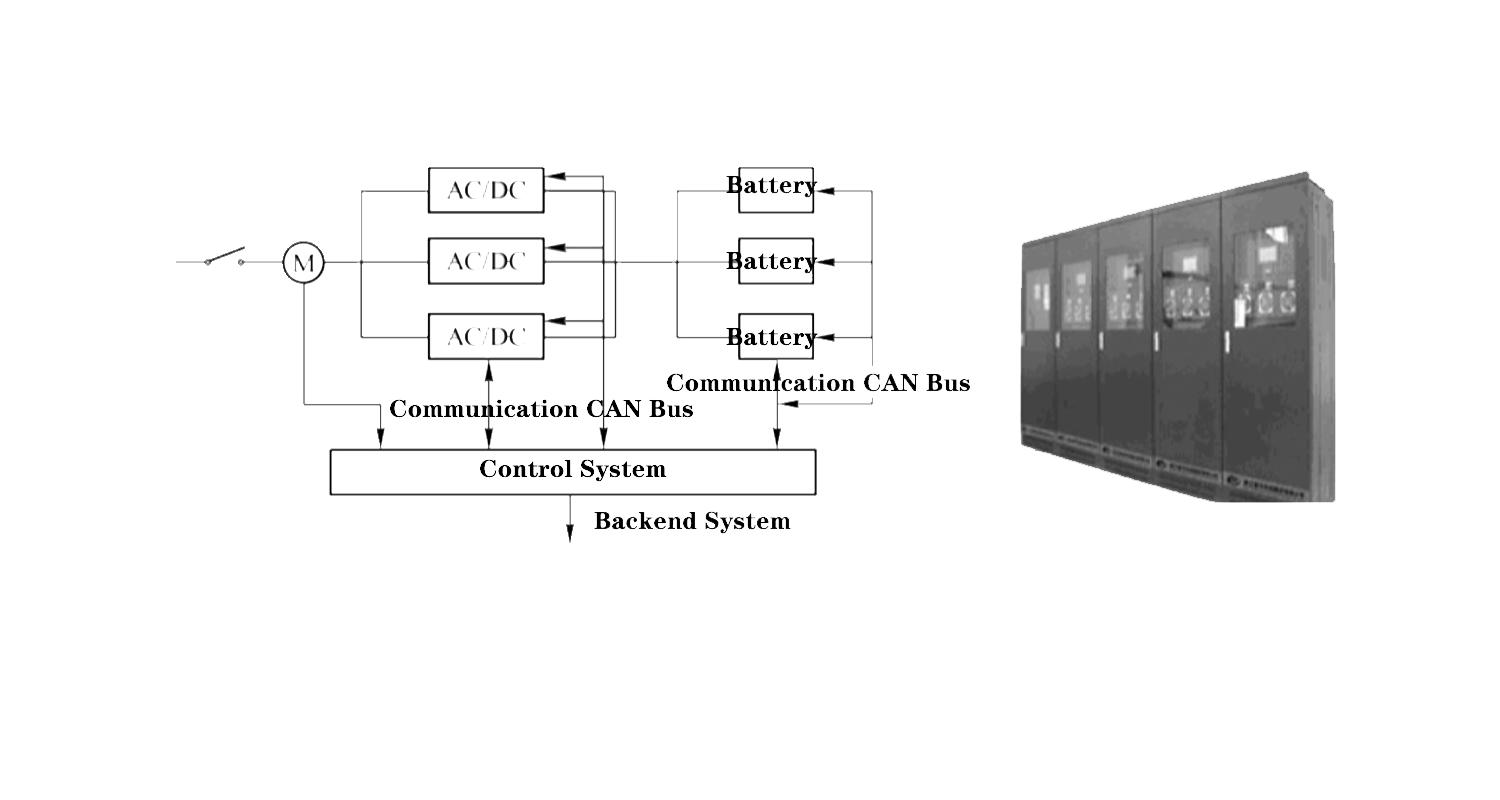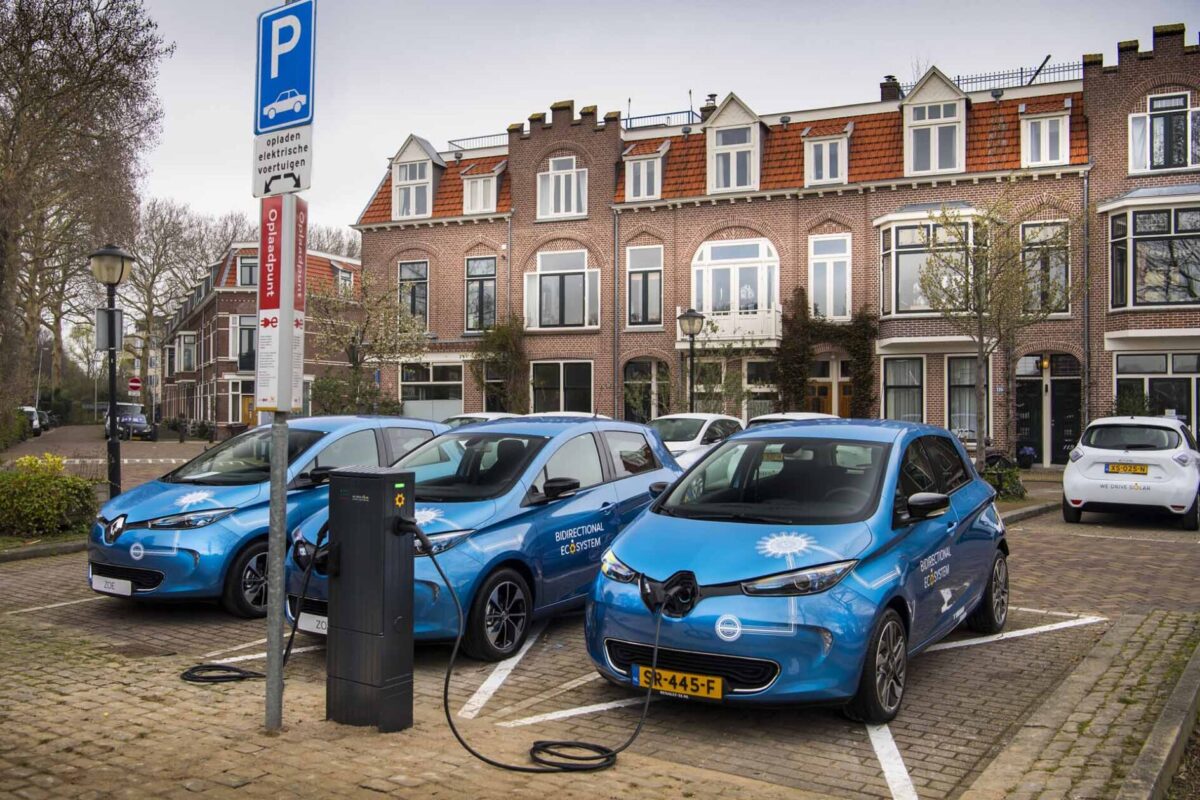The electrical system solution of electric vehicle charging station based on V2G technology and energy storage technology can not only provide charging and power exchange for electric vehicle batteries, but also expand into a distributed energy storage station. It has open, interactive and intelligent charging and discharging management. , which will make the charging station with the function of energy storage power station an important part of the smart grid.
The power supply system of electric vehicle charging station based on V2G technology and energy storage technology mainly provides power for charging equipment, and is mainly composed of primary equipment (including switches, transformers and lines, etc.) and secondary equipment (including detection, protection, control devices, etc.) , and is specially equipped with active filter device to eliminate harmonics and stabilize the power grid.
1. V2G technology
V2G is short for Vehicle-to-grid. It describes a system in which energy is fed to the grid through a bidirectional inverter connected to the grid when the hybrid or pure electric vehicle is not running, and in turn, when the battery of the electric vehicle needs to be charged, Electric power is supplied from the grid to charge the battery. The core idea of V2G lies in the interaction between electric vehicles and the grid, using a large number of electric vehicle storage energy as a buffer for the grid and renewable energy.
When the grid load is too high, the electric vehicle energy storage is used to feed the grid, and when the grid load is low, it is used to store the excess power generation of the grid to avoid waste. In this way, electric vehicle users can buy electricity from the grid when the price of electricity is low, and sell electricity to the grid when the price of electricity from the grid is high, so as to obtain certain benefits.
When electric vehicles are used as loads, the charging time can be reasonably arranged through technical and economic means to achieve orderly charging management, achieve the effect of shifting peaks and filling valleys, improve system operation efficiency, and reduce the impact on power grid security. On the other hand, when the power battery is used as an energy storage device, it can be used as the backup capacity of the system, or provide energy to the grid during peak loads to optimize the operation of the grid. In this context, the concept of V2G came into being.
V2G can be applied to all networkable vehicles, such as plug-in electric vehicles (eg, battery-powered electric vehicles) or plug-in hybrid vehicles. Because most electric vehicles are parked an average of 95 percent of the time, their batteries can flow power to the grid, generating roughly $4,000 in value per vehicle per year.
In the United States, an eye-catching V2G project is a series of studies being conducted by a group led by Dr. Willett Kempton at the University of Delaware. Their goal is to demonstrate the V2G project environment and business to expand the product market. Other investors are Pacific Gas and Electric Company, Xcel Energy, the National Renewable Energy Laboratory. In the UK, it is the University of Warwick that is working on the project. In China, the technology is not yet mature. China and the United States signed a cooperation agreement on this technology, so this technology has been elevated to a strategic level of international cooperation. In my country, the Ministry of Science and Technology led the implementation of the “Ten Cities, Thousand Vehicles” plan, the purpose of which is to promote the use and development of electric vehicles and related technologies in China.
V2G technology is an important part of smart grid technology. The development of V2G technology will greatly affect the business operation mode of electric vehicles in the future. Research shows that, in parallel with the progress of smart vehicles and smart grids, plug-in hybrid electric vehicles (PHEVs) and pure electric vehicles (EVs) will become an integral part of the distribution system itself within 20 years, which requires the provision of energy storage, Balance demand, improve emergency supply and grid stability. According to research, more than 90% of passenger vehicles drive an average of about 1 hour a day, and 95% of the time is idle. When the electric vehicles in the stopped state are connected to the power grid, and the number of electric vehicles is sufficient, the electric vehicles can be used as movable distributed energy storage devices, and on the premise of meeting the driving needs of electric vehicle users, the remaining electric energy can be controllably fed back to the power grid .
After the large-scale application of V2G technology and smart grid technology, the charging and discharging of electric vehicle batteries will be unified. According to the established charging and discharging strategy, electric vehicle users, power grid companies and auto companies will gain a win-win situation. One of the characteristics of V2G technology is that it can deploy the charging and discharging of batteries in a unified manner, and use the efficient charging and discharging strategy of “charging during the valley period of electricity consumption and selling electricity during the peak period” to enable electric vehicle users, power grid companies and automobile companies to share Benefit.
(1) For electric vehicle users, under the premise of implementing floating electricity prices, they choose to charge the vehicle when the electricity price is low, and sell the stored energy to the smart grid when the electricity price is high, and use the price difference to obtain subsidies to reduce electric vehicles. cost of use.
(2) For power grid companies, electric vehicles can be used as mobile energy storage devices and peak shaving systems, charging when the power supply is surplus, improving the utilization efficiency of power, discharging when the power is in short supply, alleviating the power consumption pressure, and delaying the power grid. Construction investment to improve the efficiency and reliability of power grid operation.
(3) For automobile companies, they are currently facing the dilemma that electric vehicles cannot be widely popularized in a short period of time. An important reason is that the cost of electric vehicles is too high. The application of V2G technology can effectively reduce the use cost of electric vehicles and reduce The burden of electric vehicle users, in turn, will inevitably promote the vigorous development of electric vehicles, and auto companies will also usher in new opportunities for development.
As a technology to build the interactive relationship between electric vehicles and smart grid, V2G has important strategic significance:
(1) The large-scale use of electric vehicles can directly reduce the CO2 of the vehicle life cycle
emission.
(2) Through V2G technology, renewable energy can be integrated to balance the peak and valley load of the grid, thereby improving the efficiency of energy use.
(3) V2G technology can also allow electric vehicles to obtain considerable economic benefits through peak shaving.
Through V2G technology, electric vehicles can be used to store electricity generated by wind and solar energy, and then stably feed it into the grid. Moreover, if these vehicles can also communicate with each other and share energy intelligently, it can avoid the pressure on the grid caused by peak electricity consumption.
2. X—DR type off-board charger
The X-DR type off-board charger adopts V2G technology and high-frequency IGBT rectifier and inverter module, which can not only charge the power battery safely and quickly, but also rely on the controller to communicate with the background system, and feed back the energy of the power battery to the power grid. , complete the two-way energy exchange between the grid and the battery. X-DR type off-board charger adopts high-speed CAN bus to ensure fast and reliable connection of communication. The schematic diagram and physical diagram of X-DR type off-board charger are shown in Figure 7-15. The AC charging pile configured by the X-DR type off-board charger mainly provides the slow charging function for electric vehicles, and the output is AC power, which is connected to the on-board charger. The schematic diagram and physical diagram of the AC charging pile are shown in Figure 7-16.

Figure 7-15 Schematic diagram and physical diagram of X-DR type off-board charger

Figure 7-16 Schematic diagram and physical diagram of AC charging pile
The charging monitoring system of the X-DR type off-board charger consists of one or more workstations or servers, which can include monitoring workstations, data servers, etc. These computers are connected through the network, and the monitoring system structure is shown in Figure 7-17. The monitoring workstation provides a human-computer interaction interface for charging monitoring, and performs monitoring, data collection, and query of the charging machine; the data server stores the original data and statistical analysis data of the entire charging system, and provides data services and other application services.

Figure 7-17 Structure of charging monitoring system
The main technical advantages of the electrical system solution for electric vehicle charging station based on V2G technology and energy storage technology are as follows:
(1) The safe, efficient, intelligent and interactive charging and discharging management system will make the charging station truly become an important part of the smart grid.
(2) Mature transmission and distribution technology and optimized power quality control technology ensure the safe and reliable grid-connected operation of charging stations.
(3) Based on advanced V2G technology, power electronics technology and long-term research on power batteries, it not only ensures the efficient charging efficiency of power batteries, but also fully considers the efficient and stable operation of the power grid.

